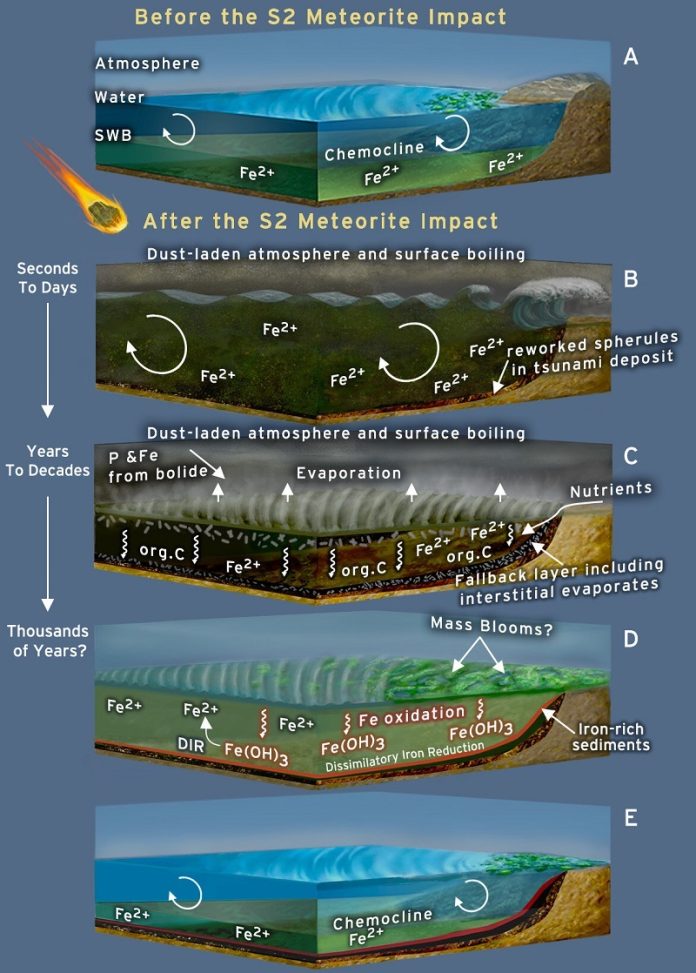
Billions of years ago, Earth was frequently struck by meteorites.
One of the largest impacts occurred around 3.26 billion years ago, and scientists are now uncovering its secrets.
This giant meteorite crash may have played a surprising role in supporting the growth of early life on Earth.
Nadja Drabon, a geologist and assistant professor at Harvard University, is studying how these ancient meteorite impacts affected our planet.
At that time, only simple life forms like single-celled bacteria existed.
Drabon and her team want to know how events like meteorite impacts shaped the Earth, including the formation of oceans, continents, and the development of life.
Drabon’s research, published in Proceedings of the National Academy of Sciences, focuses on a meteorite impact called “S2.”
Evidence of this impact is found in the Barberton Greenstone Belt of South Africa. By carefully collecting and studying rock samples from this area, the team has uncovered what happened the day the massive meteorite—up to 200 times larger than the one that wiped out the dinosaurs—struck Earth.
Drabon describes it as a scene of destruction. Imagine standing off the coast in shallow water with calm waves. Suddenly, a huge tsunami crashes in, ripping up the sea floor and stirring debris from the land into the ocean.
The impact was so intense that it caused the top layer of the ocean to boil away and covered the planet in a cloud of dust, blocking sunlight and halting photosynthesis for a while.
Despite this devastation, bacteria managed to survive and bounce back quickly. The impact created conditions that actually helped certain types of bacteria thrive. Iron was stirred up from the deep ocean into shallow waters, and the meteorite itself brought phosphorus, which also came from the weathering of rocks on land. These elements fed iron-metabolizing bacteria, which flourished in the aftermath.
Although meteorite impacts are often seen as destructive, Drabon’s research shows that they may have had benefits for early life on Earth. The S2 event provided the perfect conditions for certain bacteria to grow, suggesting that some of these impacts might have helped life develop and evolve.
The Barberton Greenstone Belt, where Drabon’s team focuses their work, holds evidence of at least eight major meteorite impacts. Drabon and her students plan to continue exploring the area, searching for more clues about how these ancient impacts shaped the Earth and its early life forms.
Source: Harvard University.



